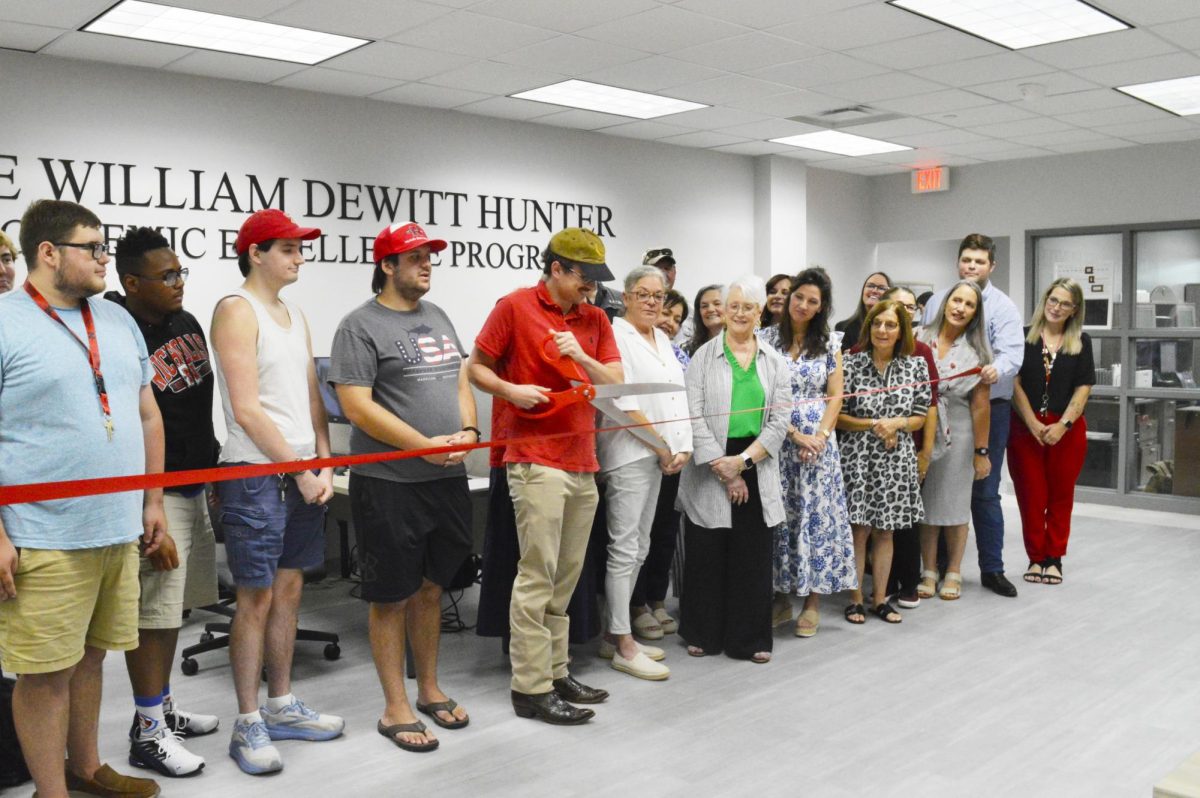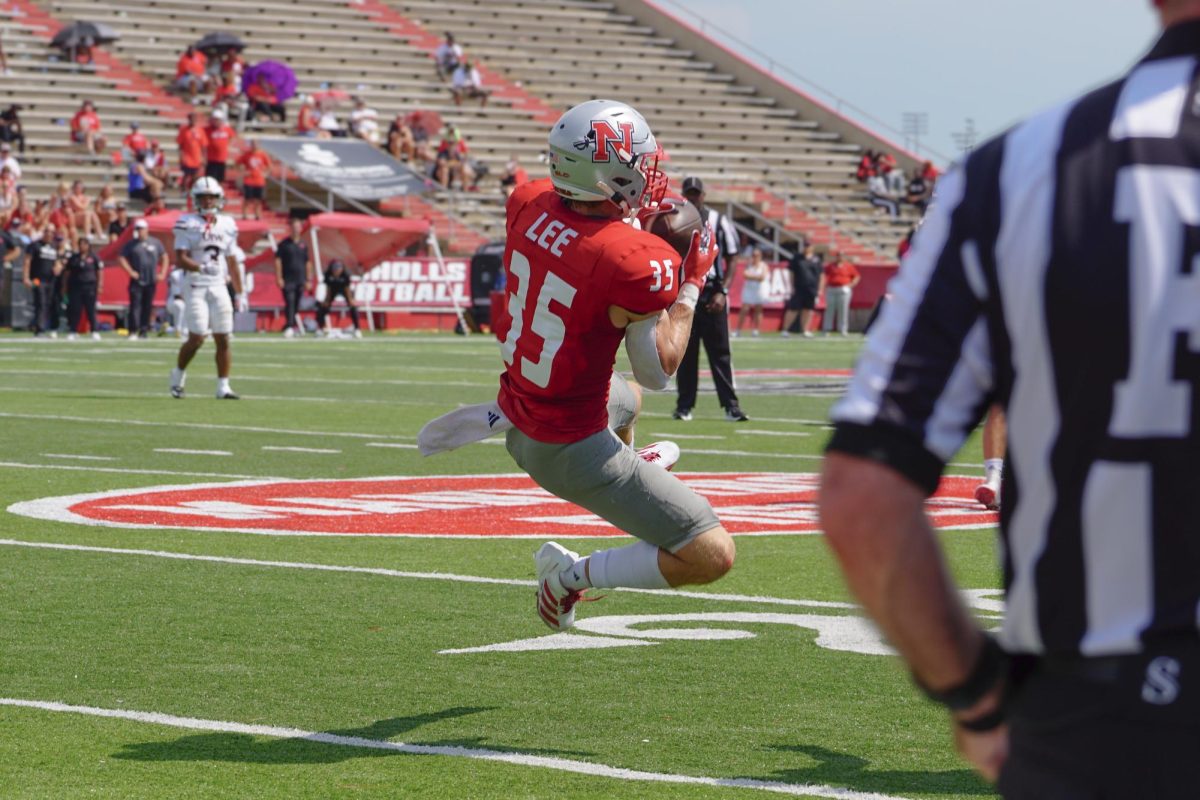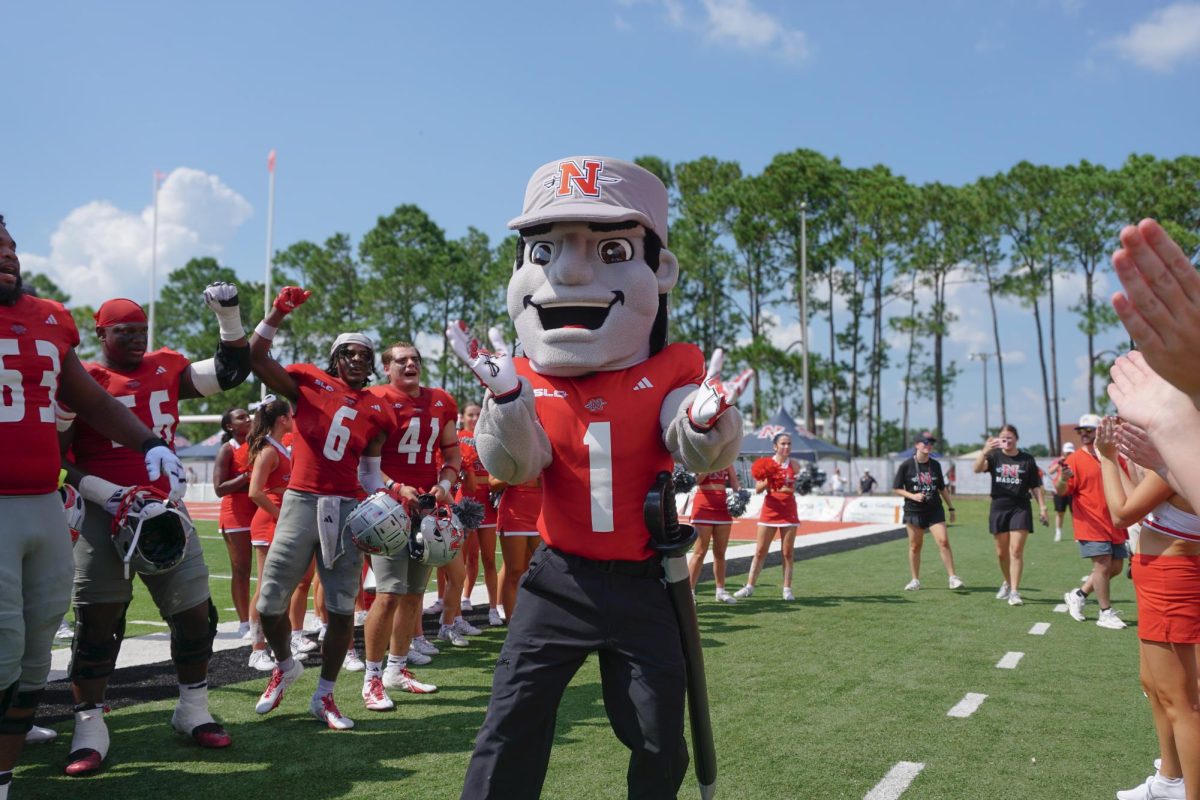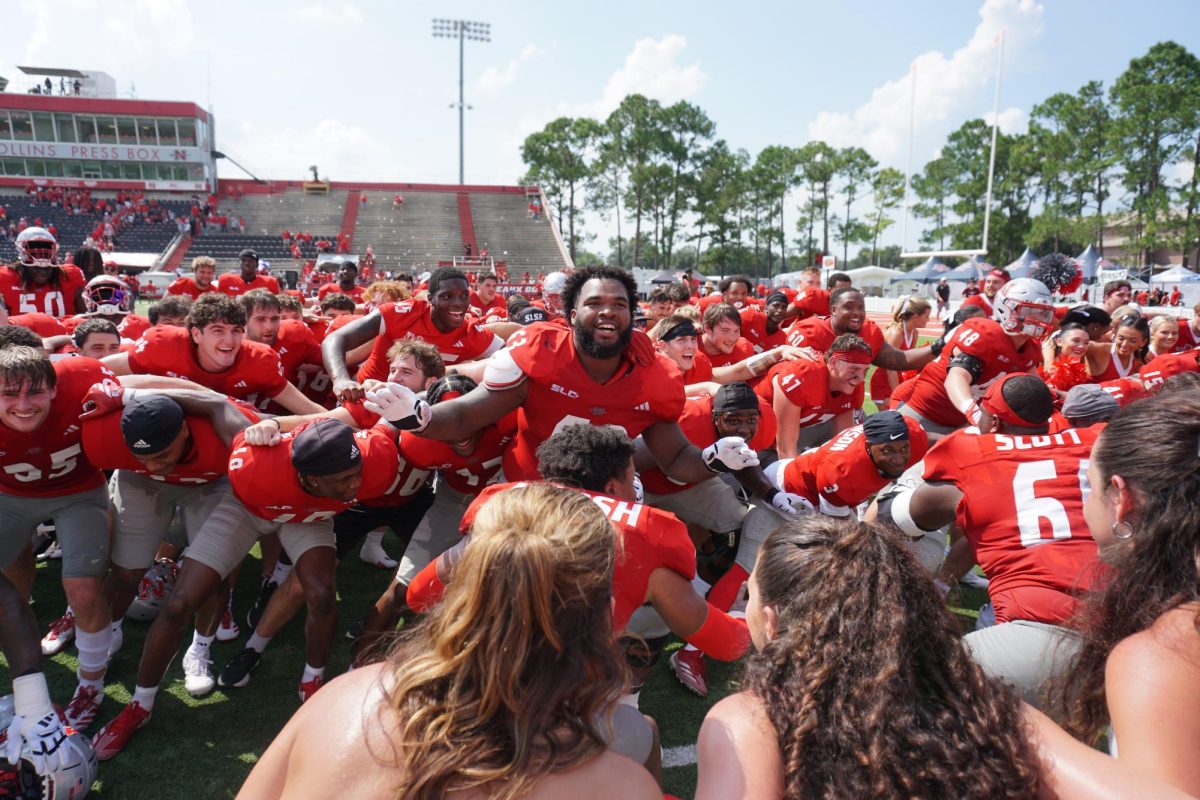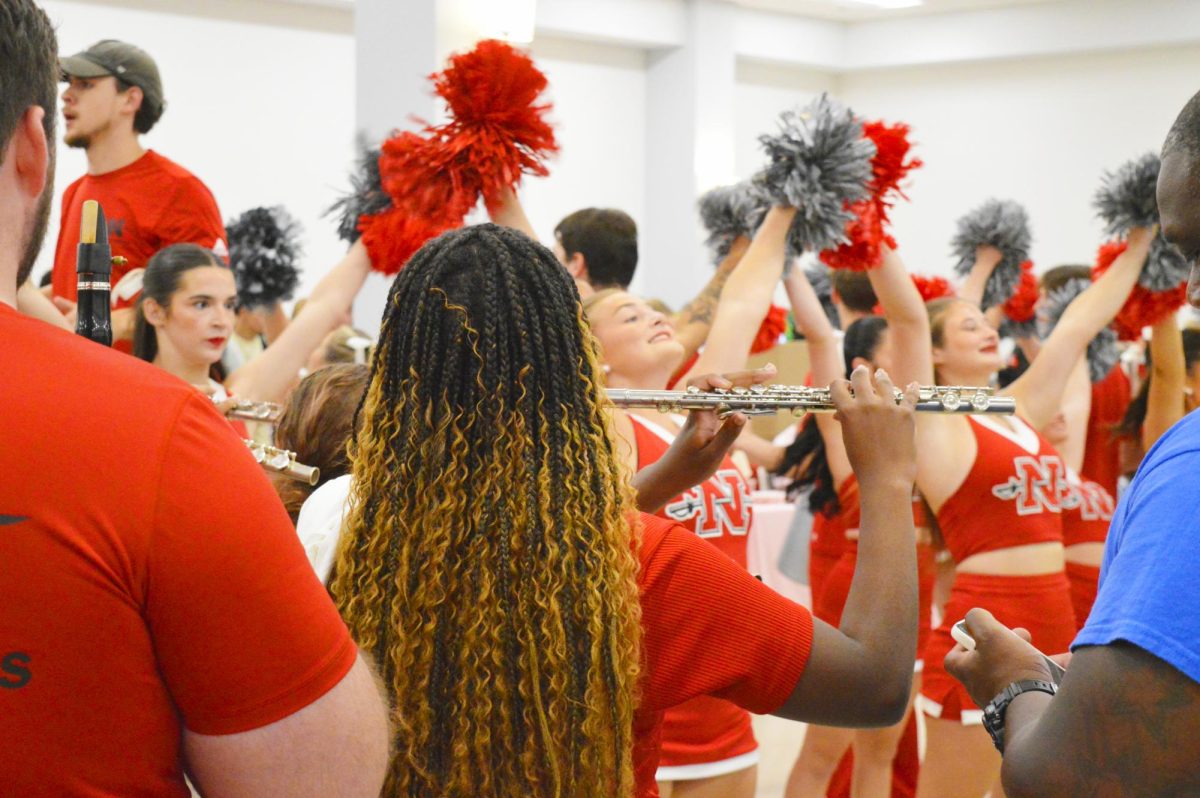Writer Ken Wells, a Wall Street Journal editor and Nicholls graduate, spoke last Friday about his second novel, “Junior’s Leg” in Le Bijou Theatre in the student union. The protagonist in “Junior’s Leg” is Junior Guidry, who was the bully in his first novel, “Meely LaBauve.”
“After the first book came out, it received good reviews. I started to think about another book. Immediately, Junior Guidry popped into my mind. Junior’s a bad guy, and, to some extent, I think it’s true in literature that the stories of bad people are a lot more interesting than ones of good ones,” Wells said.
Junior Guidry is a rugged character who blows his money on alcohol and prostitutes. He has a wooden leg, which he loses during the story.
Wells said the character is an archetype of the typical oil field worker he knew while growing up in Louisiana.
“When I graduated from high school in 1966, every boy who wasn’t going to college — which was just about everybody back then — was going offshore. What would Junior do? Junior, being a big guy, 6’4″, 240 pounds, is the macho type who would definitely go into the oil field. People are always asking whether or not my characters are real. Well, I think that Junior is pretty faithful to an archetype,” he said.
The theme of the novel is his redemption, which is brought about by Iris Mary Parfait, a woman of mixed Indian descent.
“I conceive that if you can take a bad character and get inside his head and credibly redeem that character, that would be an incredible challenge as a writer. So all along, my goal was to save Junior’s sorry ass from his sorry self, but I try to do that credibly,” Wells said.
The cast of characters includes many of the archetypes found in Louisiana folklore, including drunkards, corrupt policeman, gang bosses, nuns, a savvy lawyer and the dedicated reporter and star of Wells’ novel “Meely LaBauve,” who is similar to Wells himself.
Wells grew up on Bayou Black near Houma and graduated from Terrebonne High School in 1966.
“I grew up in this place called Bayou Black, and my Dad was an alligator hunter. But of course when you grow up around Bayou Black everybody has strange daddy, a Cajun daddy and a Cajun grandma who does stuff like that. The further I got away from Louisiana and the more I traveled the world, the more I realized what a peculiar place we lived in,” Wells said.
Initially, Wells went to Nicholls right after high school, but flunked out as a freshman. He received a job at the Houma Courier as a reporter, and soon returned to Nicholls where he graduated in English in 1972.
He then became a graduate assistant at the University of Missouri of Journalism and received his master’s there.
After receiving his degree, Wells became a reporter for the Miami Herald for four years. He was a Pulitzer prize runner-up for a story he did in 1982 on how Florida was mishandling its water resources.
The notoriety Wells received from this got Wells a job at the San Francisco bureau of the Wall Street Journal.
During his 8-year stint there, Wells covered numerous stories including the Exxon Valdez oil spill near Alaska.
After that, Wells transferred to London for four years where he covered burning oil wells after the Gulf War.
Now Wells is a page one senior editor of the Wall Street Journal at its headquarters in lower Manhattan, where he has been since 1993.
He lives in Ridgewood, N. J. with his wife and his two daughters, and writes his novels during his morning and evening commutes to work.
Wells’ recent trip to Nicholls was postponed a week because of the attack on the World Trade Center towers, which are just a few hundred feet from the Wall Street Journal headquarters building.
The collapse of the towers caused debris to fall into the lobby of the building. The damage has caused the Wall Street Journal to move its headquarters to South Brunswick, N. J., temporarily.
“We work within the shadow of the World Trade Center. It’s inconceivable that these things could have fallen down. It’s my work neighborhood. Now you walk into work and no longer see those two buildings, and you can’t even wrap your mind around it,” Wells said.
Following his presentation, Wells took questions from the audience. Afterwards the students had a positive response to his appearance.
“I aspire to be an author and find him very inspiring. He was a very entertaining and heart warming individual. It’s great to have an author speaking from our area, writing about our culture,” said Len Adams, a mass communications major.
“I almost bought Ken’s book yesterday afternoon, now I know I want it. I thought he was very Louisiana, he hit us with our culture on the heads,” said Tracy Boudreaux, another mass communications major.
Wells said that he writes about Louisiana because he wants to catch what is left of what he thinks is one of the one last genuine places free of the homogenization of American mass culture.
“Louisiana is what I call one of the last real places in America. We have not been totally overrun by mall culture and the homogenization that has taken over most of America. Sure, we still have our shopping malls in Louisiana, but underlying that we have the fabric of this really interesting culture which got into the 19th and even the 20th century a little late in life, which is probably good for us,” he said.
“Even though it’s now changing and becoming more homogenized, it still burns brightly in my imagination.”



